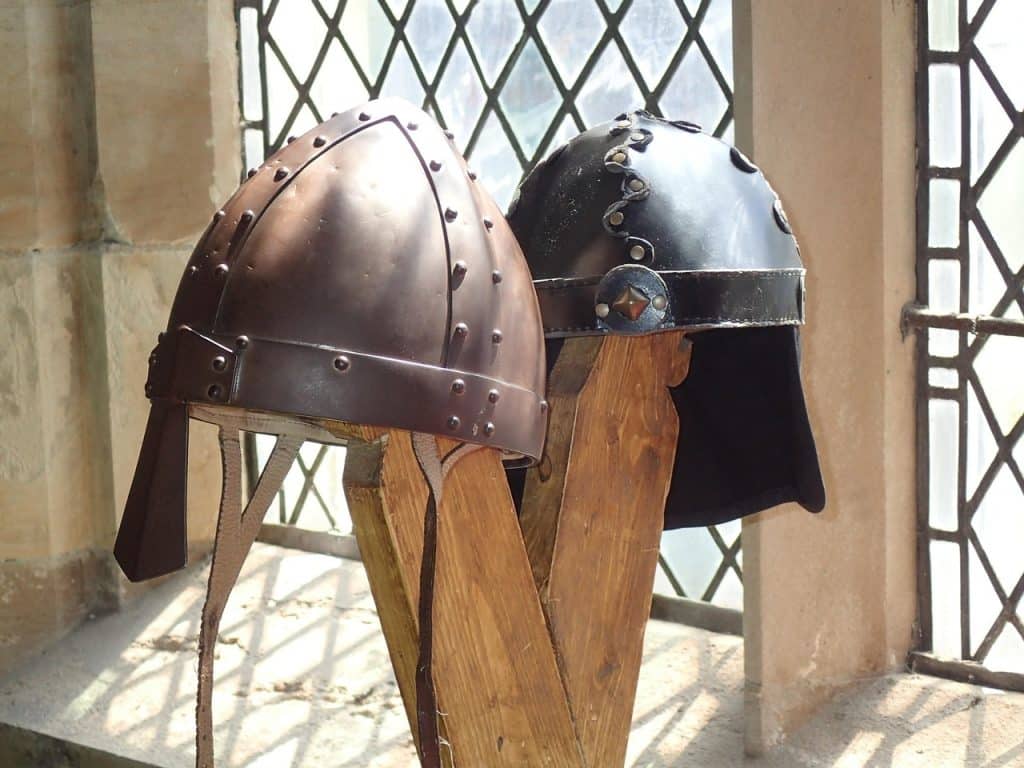The popular image of the Viking is one of battle-fury and seafaring daring, yet beneath the mail-coat and the longship lay a profound and constant awareness of something far less visible: luck. To the Northmen this was no mere turn of chance. They called it hamingja—a personal fortune, almost a living presence, handed down through the family line and shaped by every oath kept or broken.
A king with strong hamingja could conquer kingdoms; a warrior whose luck had “cracked” might fall to the first spear. War, trade, exploration, even the decision to put to sea—all were weighed against this invisible companion.

Hamingja: The Inherited Force of Fortune
Hamingja was understood as a kind of guardian spirit of success, sometimes even appearing in dreams as a woman of great beauty or power. It followed bloodlines: the sons of a lucky father were expected to carry the same gift. Yet it was not fixed. Honorable deeds, generous sacrifice, and courage in the face of danger strengthened it; cowardice, oath-breaking, or stinginess could wound or destroy it. In the sagas we constantly meet the phrase “his luck was great” or “his hamingja had left him,” offered as a straightforward explanation for victory or sudden ruin.
Even today, some corners of the gaming world still let you test that same rush of “what will fate give me?” without risking your own silver. Plenty of modern halls offer 50 free spins with no deposit required—a clean echo of drawing lots under the northern lights, only the longship is now a browser tab. You’ll find a regularly updated list right here: https://spielen-slots.de/free-spins/50-freispiele-ohne-einzahlung/. Same old hamingja, new bones to roll.
Runes: Letters That Spoke of Hidden Things
The runes the Vikings carved on memorial stones and sword-blades were more than an alphabet. According to the Hávamál, Odin himself hung nine nights on Yggdrasil and surrendered an eye to gain their secret. Each symbol carried layers of meaning—practical, poetic, and magical.
When a difficult choice loomed—whether to sail for Greenland, to attack a coastal monastery, or to accept a dangerous truce—wise men and völvas (seeresses) would cast rune-staves onto a white cloth and read the patterns. As the Saga of Erik the Red recounts, the Greenland settlers consulted runes before the great western voyages. The world, to a Northman, was never truly random; it was a fabric of signs for those who knew how to look.
Omens: Messages Written on the Wind and Waves
A raven flying to the left. A horse stumbling three times at the start of a journey. A dream of blood-stained snow. These were not curiosities—they were direct communications from the gods or the dead. In Egil’s Saga, Egil Skallagrimsson postpones a revenge killing because the omens are unfavorable; only when the signs turn does he ride out. On the open sea, where no landmark existed for weeks, such observations were often the only navigation between life and a cold grave.
A Culture That Made Gambling Feel Sacred
To people who already believed their personal fortune could be tested and measured, games of chance were simply one more arena in which hamingja revealed itself.
Archaeologists regularly uncover bone dice and gaming pieces in Viking graves and settlements — sometimes placed in the hand of the dead for the journey ahead. Simple lot-sticks and dice games were played on the thwarts of longships and around the hearth during the long winters. Hnefatafl, the asymmetrical “king’s table” game, leaned more on strategy, yet even there the winner was often said to enjoy divine favor.
Stakes could be modest or staggering: hack-silver, weapons, horses, ships, even personal freedom. The sagas treat heavy gambling not as a vice but as a proving ground of character and luck.
Three Ways of Listening to Fate
| Practice | Method | Tools | Connection to Hamingja |
| Rune-casting | Throwing and interpreting carved staves | Rune-marked wood or stone | Revealed which path fate was most aligned with |
| Reading omens | Observing nature, dreams, animal behavior | The natural world itself | Indicated divine favor, warnings, or shifts in luck |
| Gambling | Playing dice, drawing lots, board games | Bone dice, marked sticks, boards | Displayed personal fortune and the strength of one’s hamingja |
The Gods Stood Close When the Dice Were Thrown
Odin, who traded an eye for wisdom and discovered the runes, was the natural patron of any attempt to read the hidden. Sailors and gamblers alike might carve his name or bind a rune to the dice bag. Thor, the straightforward thunderer, granted the raw courage needed when the stakes were high. And always behind both stood the Norns, weaving the threads no mortal could fully escape—yet a bold offering or a well-timed oath might still sway the pattern a little.
A World Alive With Meaning
For the Northmen, luck was never blind. It moved through blood, through honor, through the flight of birds and the fall of carved staves. Gambling was not an escape from that world—it was one of its most honest expressions: a voluntary step into uncertainty where a man’s hamingja could stand up and declare itself.
To understand how deeply the Vikings cared about luck is to understand the Norse world itself: dangerous, alive with unseen forces, and never, ever indifferent to the courageous heart that dared to meet it halfway.
